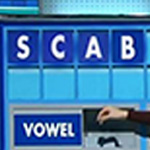
Fill the space with their imagination.
My Will asked me this morning “What’s a scamp? Does it stand for School of Communication Arts Media Post”? Lol! (Shit that reminded me, I had to do a SCAB this week and I promised myself I’d never miss a deadline).
Me: “No, it’s those bits of A3 paper you see lying around the house with sketches on, they’re scamps”.
Will: “so why aren’t they called sketches?” Good question I said, but I have no idea, it’s an ad thing! Refusing to accept that as an answer, he proceeded to check out the etymology of ‘scamp’.
If you google its origin, it’s a ‘highway robber’ or ‘to get away’ or a ‘rascal’ or a ‘rogue’, take from that what you like. So neither of us is any clearer on how the word came to mean rough sketch in Adland.
Coincidentally I learnt a very valuable lesson this week about scamps.
I’ve lost count of the number of times I’ve heard the people I look up to in advertising tell the importance of scamps. I’ve practiced my drawing skills and I’ve bought the pens and I vowed to always do the scamp process justice, however, you guessed it, instead of doing scamps to show the design concept, I did a (really shitty) half baked adobe execution of our campaign. I found myself getting more and more frustrated because I couldn’t get what was in my head into illustrator. I was trying to borrow other people’s assets to bring our idea to life but it just wasn’t working.
When it came to presenting our idea, I felt frustrated because I knew the execution hadn’t done the idea concept justice.
The best thing about showing your campaign to everyone, is the reflection that happens afterwards; the learning. You kind of know what’s wrong with it before presenting but when you have to explain your idea to others, that’s when it really hits home.
I learnt first hand the reason why a scamp is so much better than a half arsed adobe execution and this is why:
I liken it to reading a good book and then watching the film. The film is never as good as the book.
Why is that?
This is what I think happens when you read a book. It’s in black and white and you only have the narrative as a guide, the rest (most of the story) is down to your imagination and so you create the scenes, the characters, the fine detail yourself, just as you like it. You use your IMAGINATION. When you watch the film after you’ve read the book, it’s never as you expected, because we are all different. Thank goodness by the way.
When you do a rough scamp, especially if it’s in black and white, you give the audience the opportunity to use their imagination to bring it to life, just how they like it. They’re more likely to engage with a black and white scamp because you’ve forced them to use their imagination and who doesn’t want that? Also, they know that it’s just a rough sketch, so they know that it’s ‘temporary’, it’s in ‘working progress’ and they have some element of control of how it could look and so they feel involved in the process, you’ve brought them along the way.
So, despite having all the digital assets I could possibly dream of at my fingertips, I’ll remember the value of the pen and paper and the importance of executing the idea in the simplest format by hand because when you do that, you let your audience fill the white space with their imagination.











